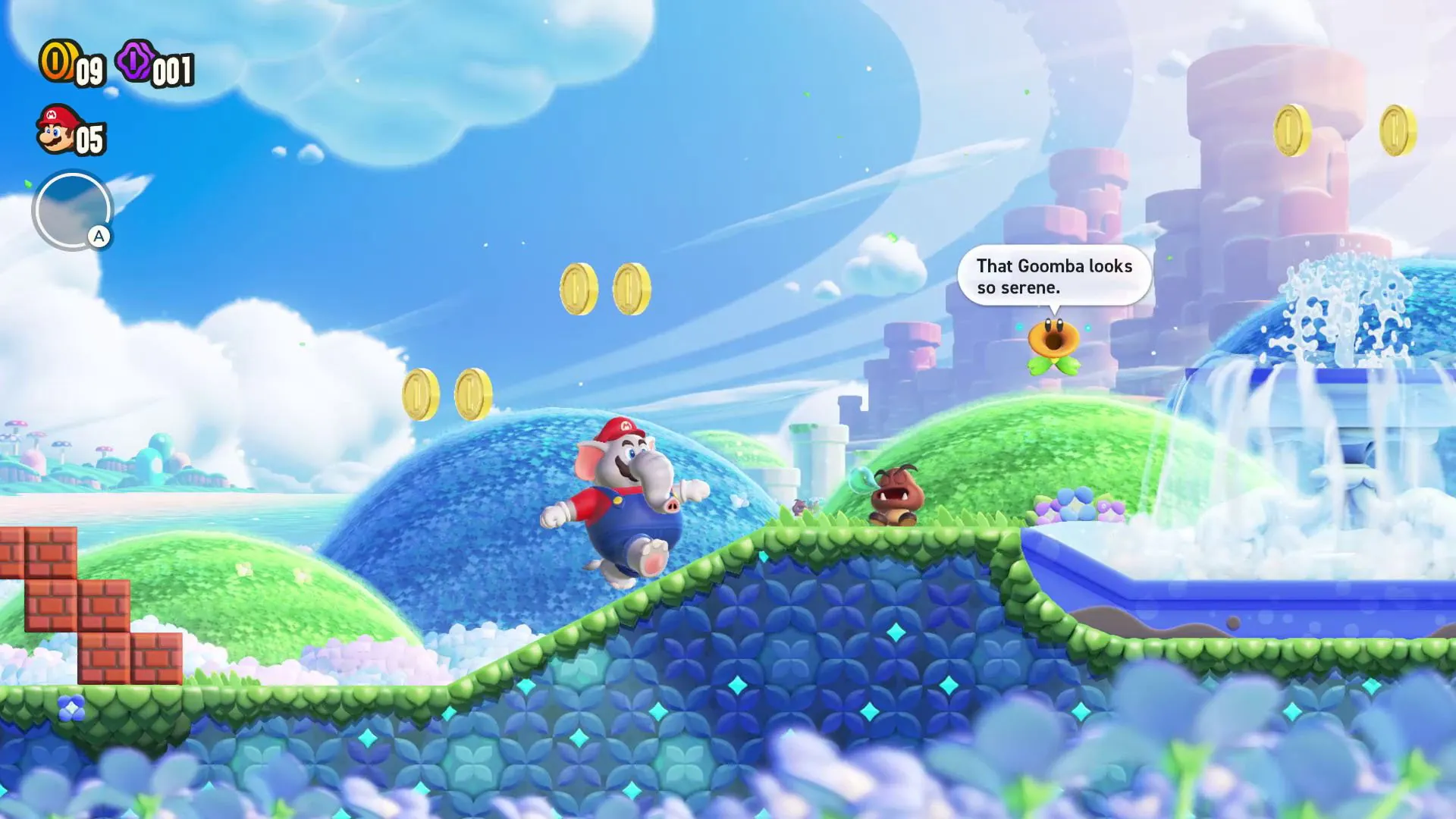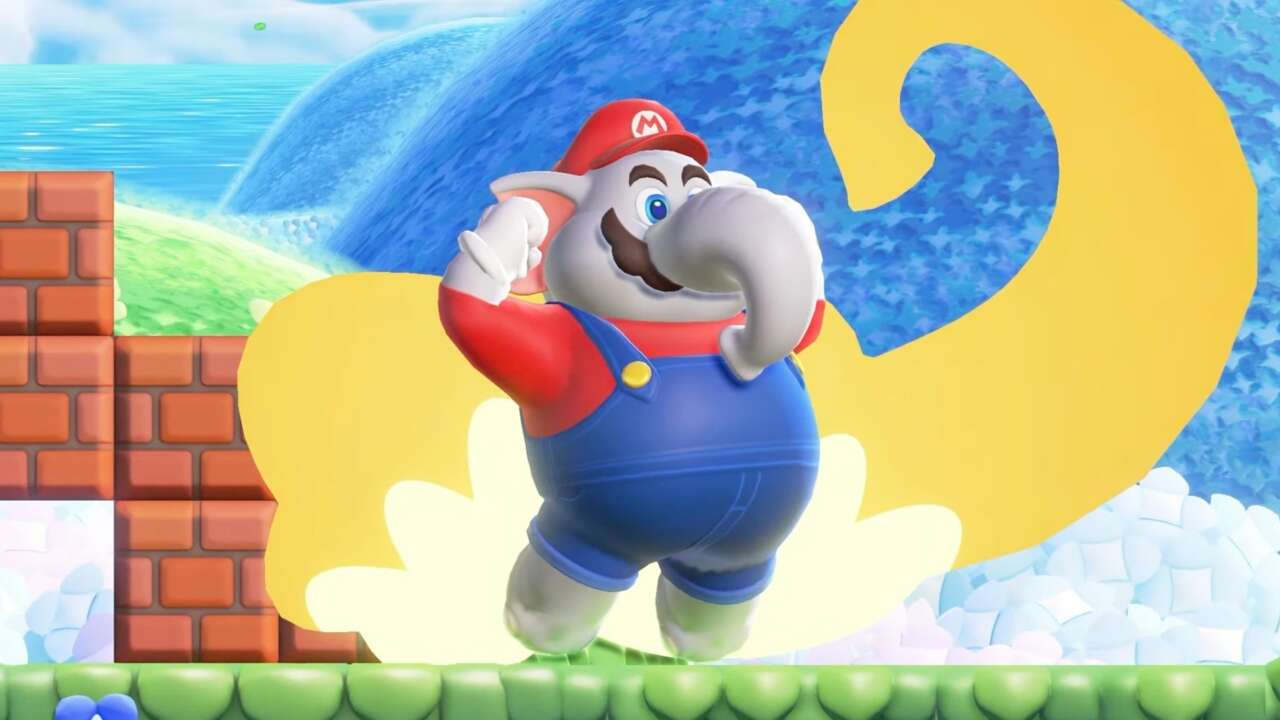Reviews
Super Mario Bros. Wonder Review (Switch)

Super Mario Bros. is back for yet another elephant-sized adventure across the whimsical realm of the Flower Kingdom in an all-new side-scrolling game. About time, too, what with the last side-scrolling entry in the series having rolled out well over a decade ago. Question is, has Nintendo added a few new flavors to its blueprint since 2012’s Super Mario Bros. U, or has it more or less kept to the same pedigree and style as the source? If that’s the sort of question you’ve been molding over since Nintendo first teased the aptly titled Super Mario Bros. Wonder, then read on.
Back to Basics, Bros

To state a fact, Super Mario Bros. Wonder doesn’t attempt to dress itself up as something it’s not, nor does it subject itself to mindless experimentation for the sake of being innovative. Instead, it more or less utilizes the same assets that made its earlier iterations breach the borders of a cult-classic status, and ultimately adds to the framework through the creation of freshly minted biomes and quips. Sure enough, its characters and plot line are still one and the same, and its world is still as equally vibrant and bursting with charm as the rest of the chapters in the anthology. But Wonder, in spite of its alluring cloud of familiarity, somehow manages to breathe new meaning into a blueprint that, quite frankly, probably should’ve gone stale a long, long time ago.
Of course, it’s a side-scrolling game at heart, so first and foremost, there’s hardly any reason to fret over the lack of experience on Nintendo’s part. Evidently, it’s a blueprint that the team has combed over several times before, so to say Wonder was a concept that was slightly out of their reach just wouldn’t be true. Fact is, Nintendo knows how to carve out an award-winning side-scrolling platforming game; it’s been conjuring them for the best part of forty years, for crying out loud. And so, for what it’s worth, I knew long before I returned to the roots of the latest incarnation that authenticity wouldn’t be an issue. That said, did a traditional and wholesomely nostalgic approach really work wonders, or was it merely the case of Nintendo wanting to play it safe by way of infusing nostalgia into a product that it already knew would sell, regardless?
Another World, Another Flower

To put you in the picture, Super Mario Bros. Wonder follows the eight-piece collective on a brand-new whirlwind tour across the Flower Kingdom—a magical archipelago that consists of numerous biomes, along with special ability-wielding roots known as Wonder Flowers. As one of the said eight-piece, you are invited to roll through a series of levels, collect said Wonder Flowers, which essentially grant the character a temporary performance boost, and unlock new areas via the ever-famous Warp Pipes. Not a great deal has changed there, to be fair, though the inclusion of the aforementioned Wonder Flowers is definitely a neat addition to an otherwise regurgitated formula.
While on the subject of Wonder Flowers, if you happen to pick one up during your travels, then you’ll either transform into an elephant (because, you know, why not?) or ultimately transform the map into something almost otherworldly and unique. And honestly, this is where Super Mario Bros. Wonder finds its rhythm — gliding alongside a jam-packed rainbow of regions that are anything other than reworked or replicated. Sure enough, each and every level brings something fresh to the table, and not to mention new enemies to tackle, themes to explore, and power-ups to take advantage of.
It goes without saying that, as far as creativity goes, Nintendo has always been on another wavelength—a statement that harkens back to its earliest days with the franchise on the NES. Forty years later, and that creative spirit is still alive and kicking, as made clear in the Flower Kingdom’s absolutely stunning zones and denizens’ vibrant personalities. To that, I can’t complain. Matter of fact, I haven’t quite slipped into a world as wondrous and as elegant as the Flower Kingdom for quite some time — so kudos for that, Nintendo.
Hello Again, Bowser

It almost pains me to admit it, but to be honest, at no point did I ever really connect with the story in Super Mario Bros. Wonder. With hindsight, and having beaten the final chapters of the latest book, do I feel bad about not caring enough about the plot line or its returning characters? Not really. After all, it’s a story we’ve all seen a dozen times before, so as nice as it was to see all the old faces for another round — I really couldn’t begin to care all that much about the overall objective at hand. Yes, Bowser was there, and yes, Mario was also there. Put two and two together, and you can already begin to paint the whole portrait without uncovering the first, second, or dozenth piece.
In light of the somewhat forgettable storyline and same old undying feuds, Wonder makes up for its losses by delivering a solid and flawlessly entertaining gameplay experience, and not to mention a sturdy four-player co-op mode, to boot. Suffice to say that, as far as playing the actual game goes, it’s anything other than forgettable; on the contrary, it’s downright memorable for all the right reasons, and it overjoys me to say that, from a personal standpoint, it’s arguably one of the best I’ve ever had the pleasure of working through. But of course, I’m betting ahead of myself.
Story cast aside, Flower Kingdom is arguably one of the prettiest worlds we’ve ever had the chance of seeing in the virtual flesh. What’s more, with each of its levels being vastly different from one another, as well as peppered with new enemies, obstacles, and all-round curveballs to overcome, at no point does the experience ever really dry out or begin to linger on the tongue.
A Wonder to Behold

Super Mario Bros. Wonder spreads itself out across six completely dynamic worlds—chapters in which progression is framed by a series of levels. As Mario (or Luigi, Peach, or anyone else on the all-star docket, for that matter), you must gradually work through the motions and collect Wonder Seeds—useful items with which you can use to unlock additional levels on top of the core ones. Fortunately, acquiring said Seeds isn’t all that difficult; you get one from beating a level, and another from defeating an enemy or unearthing a secret location.
When all’s said and done, what really makes Wonder pop is its use of Wonder Effects—a feature that ultimately makes the standard 2D side-scrolling look transition into something else entirely, be it a top-down puzzler, or an ink blot-inspired art piece. Due to this, at no point could I ever predict what was going to happen in the next section of the game. Rather, I spent most of my time trying to figure out what the game hadn’t already done, or what else Nintendo could’ve been keeping away from me for a later stage. I was never exactly bored, is what I’m trying to say.
All in all, Super Mario Bros. Wonder stacks up a good amount of quality content, all of which has the raw power to appeal to a multitude of demographics, both young and old. It isn’t challenging enough to temper a child, but it also isn’t on the same wavelength as My Friend Peppa Pig, either. If anything, it strikes a perfect balance, which means, regardless of age, experience, or background, you’ll rarely struggle to overcome the molehills that Wonder spreads out.
Verdict

At first glance, it’s easy to compare the likes of Super Mario Bros. Wonder to Super Mario Bros. U — and at no point do I feel bad about that, either. However, once the familiarities are resolved and the Wonder Flowers eventually take form, those initial impressions quickly disintegrate into something else entirely, and thus bring forth an exciting new experience that brings the best of the basics to a breathtaking locale that, true to its word, is not only a wonder in its own right, but an absolute delight to witness unravel, piece by piece.
Take it from me — you’re going to want to see the world of Wonder from your own perspective to understand the beauty and the brawn that it brings to the table. Not a die-hard fan of the plumber and his band of loyal followers? It doesn’t really matter. Needless to say that, if you’re after a hearty 2D side-scrolling adventure that’ll also keep you second guessing for the duration of the journey, then you needn’t search any further than Nintendo’s recently erected pit stop.
Super Mario Bros. Wonder Review (Switch)
A Masterclass of Wonder
Super Mario Bros. Wonder brings the best of traditional 2D platforming to a modern world that’s absolutely crammed to the core with vibrant locales, courses, and above all, wonder. Yes, its story is somewhat forgettable, but where it lacks in depth, it certainly makes up for in every other way imaginable.











